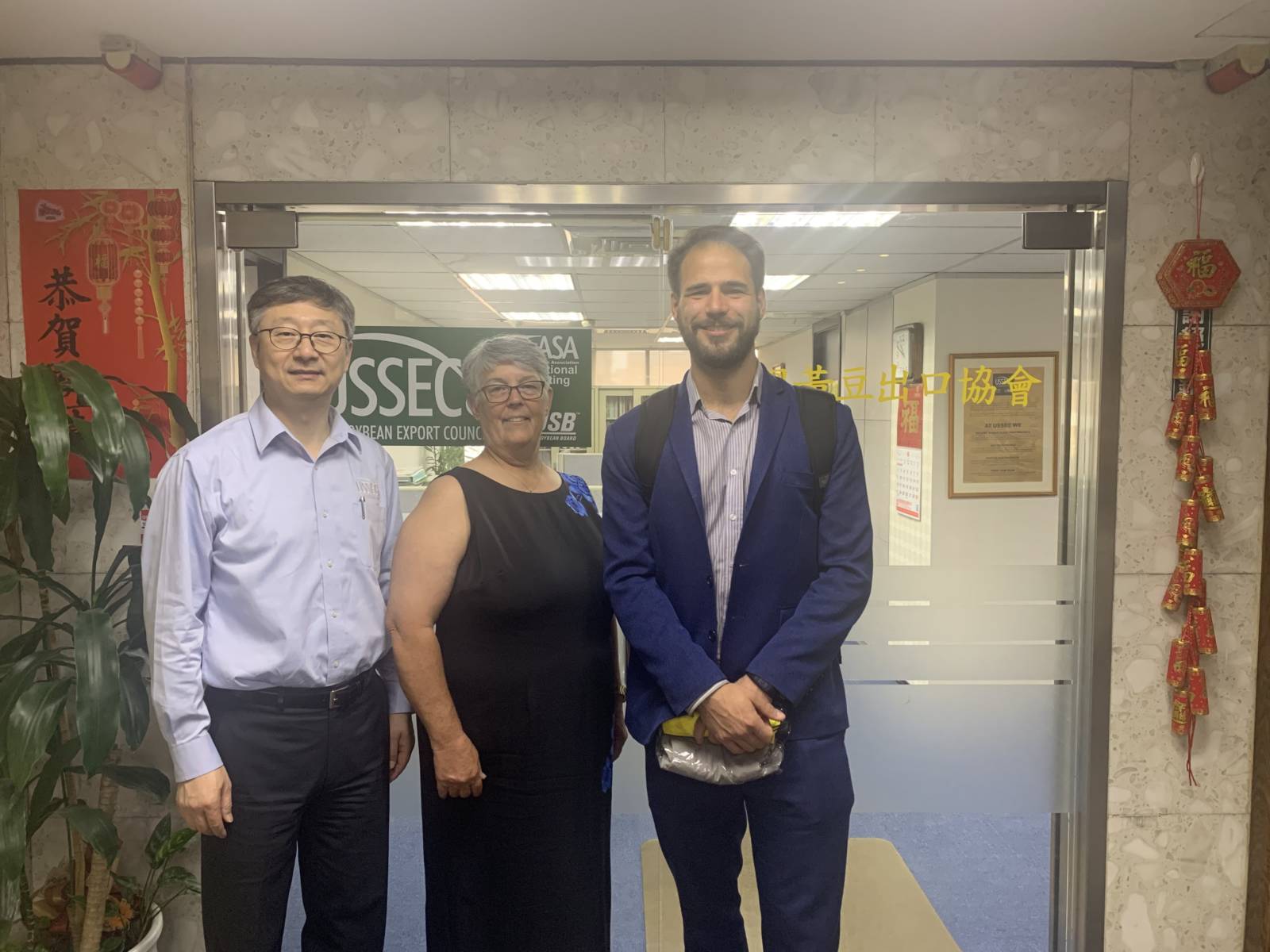Innovation is a key component of the U.S. Soy Advantage and, right now, high oleic soybean varieties are one of U.S. Soy’s hottest offerings. High oleic soybeans offer advantages to many end users of soybean oil by producing a higher-functioning oil. At present, the U.S. is exporting only small amounts of high oleic soybeans, but the stage was set for larger potential international demand when high oleic traits received global regulatory approval in 2018.
In a recent market assessment study by Agrylitica and LMC, Taiwan was noted to be a prime export opportunity market for high oleic soybean oil. Taiwan is one of the largest destination markets for containerized U.S. soybean exports, and it is expected that the first high oleic soybean and soybean oil exports will be in containers due to import size and identity preserved (IP) considerations.
High Oleic Soy and Human Utilization
Last month, I had the opportunity to travel on behalf of U.S. Soy to Taiwan.
In Taipei, I took part in small group meetings with leadership from top crushers and oil buyers, including TTET, Formosa Oil, and Taisun. The companies expressed quite a lot of interest in sourcing high oleic oil, noting that there are many domestic markets that would be suitable for HOSBO’s applications. Examples include bottled out markets and the hotel, restaurant, and institutional (HRI) sector, among others. These groups are exceptionally positive and eager to test the Taiwanese food market.
At Taisun, I talked with Jason Tsai, Vice president. Tsai leads a young group, one that is excited and ready to take advantage of this new innovation as quickly as possible. This team is eager to find out more about high oleic and wants to participate in a planned learning session this September that will be presented by the U.S. Soybean Export Council (USSEC).
Tsai talked to me about how things are changing in Taiwan. He sees change coming and wants to be ahead of it. He says that the nature of how people eat their food has changed. In the past, people would purchase meals from street vendors; now, however, that has shifted to eating in shopping centers, where they have found that palm oil smokes too much. Due to its higher smoke point, high oleic will be a good choice for this new style of consuming food.
At Formosa Oil, president Tony Shu is the second generation of leadership, delighting in innovation. If change is a high speed rail like the one I rode between Taipei and Chiayi, his group is riding it. Like Tsai, Shu wants to replace palm oil; in addition to less smoke, high oleic soybean oil is also superior for frying, he says.
Formosa Oil has its own refining plant, but indicated it would import oil prior to beans. The other two groups are considering partnering in a crush plant. Additional samples will be sent to all of these companies.
I learned that these manufacturers are working differently by trying to catch a new market. In Taiwan, people such as dignitaries, military, and manufacturers send their children to international schools, where they get the best meals. High oleic soy offers these manufacturers with an opportunity to serve this market.
Sustainable U.S. Soy
At the U.S. Soybean and Oil Marketing Training Camp in Yilan, I was excited to speak about the safety and sustainability of U.S. Soy and relayed information about how my husband Dave and I practice conservation on our farm in Maryland. Some of the subjects I discussed were GMO crops, wildlife, and spraying. In addition to these sustainability topics, I received a lot of questions about this year’s crop, ranging from the weather to U.S. planted acres and delays. The audience asked many questions about the application and functionality of high oleic soybean oil and customers were interested in talking about the costs of high oleic soybean oil versus conventional soybean oil.
I came away from my week in Taiwan with a very positive feeling about the potential for high oleic soy. Oil buyers here are very excited about this new innovation and I got the feeling that crushers will not be too far behind.
- Visiting TVOA with Will McNair
- With USSEC Taiwan Director Julian Lin (left) and Will McNair at the USSEC office
- With USSEC Regional Director – Greater China Xiaoping Zhang (left) and USSEC Director of Oil and Human Protein Will McNair (right) at the USSEC office
- Visiting customers of U.S. Soy in Taiwan




